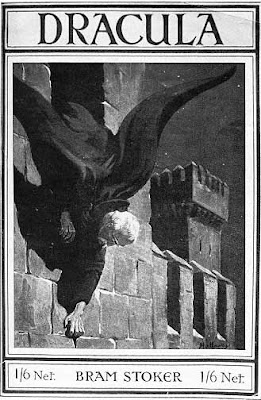Bram Stoker and the Irish origins of Dracula
As we approach Hallowe'en it seems a good time to look at the most famous of ‘Irish’ vampires, Bram Stoker’s Count Dracula. While most people assume that Stoker got the idea for the bloodsucking Count from the infamous Fifteenth century ruler Vlad the Impaler, there may be origins that are much closer to home.

Abraham Stoker (1847 – 1912) was born on 8 November 1847 in Clontarf, Dublin and was educated at Trinity College from 1864-1870. Stoker was the son of Abraham Stoker, who occupied a high-ranking position in the Chief Secretary’s office in Dublin Castle. Bram had six siblings, three of whom became doctors. Richard Nugent Stoker became very involved in the Indian Medical Service, while George also served in foreign lands but finally settled in London. William Thornley Stoker was by far the most famous member of the family during his lifetime, achieving a great deal of recognition and distinction for his work in Ireland.
You can find out more about how Stoker’s medical family influenced his work here.
Bram Stoke’s most famous work Dracula was published in 1897, but just what are the Irish influences?
One possible influence was an Irish chieftain named Abhartach, who ruled an area of what is now Derry. Abhartach was said to be a powerful and evil magician, so evil that the locals wanted to be rid of him. They enlisted the help of a local chieftain named Cathán, who slew Abhartach. But Abhartach returned from the grave and, in some versions of the tale, demanded blood from his subjects in order to sustain him. Cathán slew him again, but the magician returned once more. Cathán asked a druid or a Christian saint (depending on the version) how to kill him. He was told it was impossible as Abhartach was one of the neamh-mhairbh (undead) and a dearg-diúlaí (blood drinker), he could not be killed but he could be restrained. Cathán was instructed to kill Abhartach with a yew sword, to be buried upside down, for thorn and ash twigs to be scattered around him and for a great stone to be placed on his grave. Cathán did so and the people were free of the monster.[1]
Could this be the true origin of Dracula? Another suggestions is that Stoker was influenced by a contemporary writer and a fellow Irishman, Sheridan Le Fanu wrote “Carmilla” another vampire story. Another possible connection is that the Irish word from “blood feud” is dreach-fhoula, which is pronounced in a very similar way to “Dracula”.[2] While the name most likely came from the Romanian for “devil”, “Dracul”, Vlad the Impaler’s last name, it is still an interesting possibility.
Another suggested source for Dracula’s origins has been traced to Stoker’s mother, Charlotte Blake. Charlotte had lived through the famine and told him tales of skeletal people walking through the countryside. She even spoke of people draining the blood from the bodies for food. Perhaps this also informed the creation of Dracula.[3]
Whatever may have inspired the most famous fictional vampire, we can be certain that he will continue to capture people’s imagination.
Mark Sweeney,
Library Intern
(1) http://unmyst3.blogspot.ie/2011/07/abhartach.html (accessed 23/10/15)
(2) http://www.historyireland.com/18th-19th-century-history/was-dracula-an-irishman/ (accessed 23/20/15)
(3) http://irelandofthewelcomes.com/the-irish-dracula/ (accessed 23/10/15)